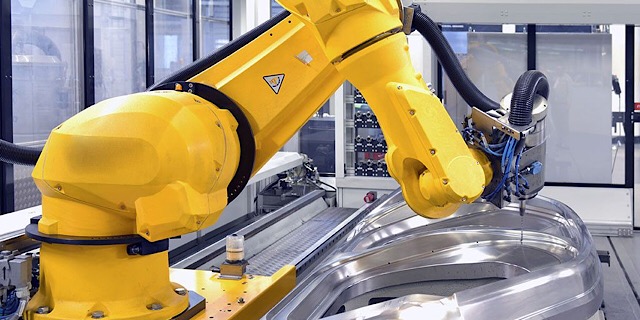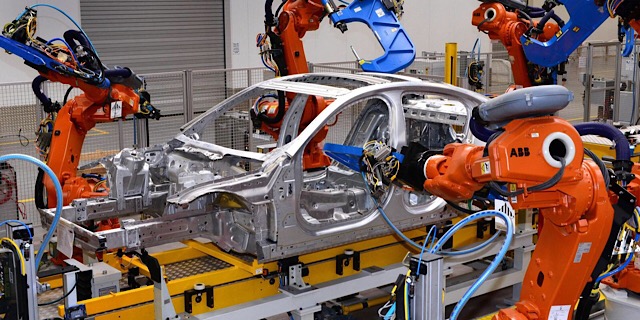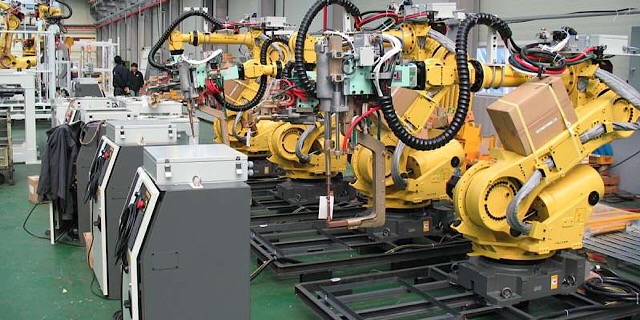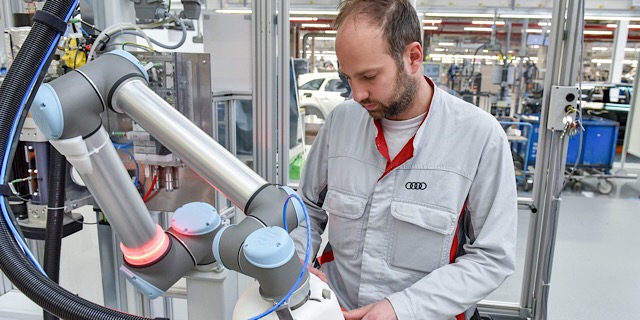中文
ENGLISH
中文
ENGLISH
Since the development of the first computers, IT has successfully marched into every industry and has taken up a considerable if not a domineering portion of the functions. This portion is growing with each year as electronic control systems and management software develops. Smart Prototyping is one of the many areas where IT can increase efficiency and decrease the cost of all the processes. One of the potential solutions to that is using artificial intelligence for manufacturing purposes.

Some parts of AI are already being used for prototype manufacturing today. They are not the frontline technologies since using certain AI software and hardware require for it to be commercially viable and foolproof. However, certain advances have been reached. For example, transportation robots are widely employed by manufacturers. They are very flexible, they can lift a large weight while being considerably small and they can work in tandem with a human worker meaning they are absolutely safe. Such robots rely heavily on machine vision to determine where they can touch the moved object and where to put it. In addition, some manufacturing systems are equipped with AI self-adjustment systems. A machine tool can measure the surface finish of the part while it machines it. If an adjustment is necessary for cutting parameters, the machine tool does it automatically.
Those examples are just the tip of the iceberg in the way, AI can improve prototyping in the future.

Machines can already substitute humans in different kinds of menial labor, calculations and system monitoring, however, what differs between a human job and a machine job today is decision making. Machines have more power and strength but humans make all the decisions. As AI develops, machines start making their own decisions. How to pick a part, how to move it in order not to collide with anything and how to place the object correctly...That is the easiest step. Then, how to organize part flow in a prototyping shop to meet all the deadlines, how to choose the optimal parameters forCNC machining, how to choose the best material and so on and so on...The potential here is enormous and only depends on the capabilities of the AI.
Recent technological developments allow us to see the potential advancements in the near future. Let's review the possible uses of AI for smart prototyping.

The modern industry is getting smaller and I do not mean the production volumes. Hardware circuits, microchips, and consequently their enclosures and appliances, in general, are getting smaller. Meanwhile, the precision demands are rising. Some industries have already reached a point where the precision required and manufacturing speeds have exceeded human capabilities. So, programmed robots took their place on production lines and humans moved to the prototyping area where the manufacturing speed is slower but flexibility is more important. However, the sizes keep getting smaller. When humans can't cope with the microscopic assemblies anymore, high precision AI robots will substitute them. Such robots are much more flexible than their mass-production counterparts because of machine vision.

Decision making is an indispensable feature for process planning. was Right now the intelligence capabilities of the software are quite limited. It can calculate complex production chains with multiple different setups as it is always in the prototyping industry and estimate the total timeline of all the projects in the workshop. However, the engineer generates the route that the part takes depending on the operations necessary. He is the one that appoints operations to the equipment. He does that based on experience, the process by itself may be efficient but if we look at the whole picture the lots and lots of different single prototypes, small batches, and mock-up models can coincide in a workshop and create bottlenecks so that one equipment unit is loaded by 200% while others stay idle.
The next step for process planning software with AI is to give it the full freedom to arrange processes, operations and even the layout of the machine shop. AI software can calculate thousands of combinations in a second and will generate a better solution.
Manufacturing is often dangerous. That's why we have standards: for ventilation, light, contact with chemicals, personal protection, etc. Nowadays this is necessary because humans do all the dangerous jobs. Why? Such jobs need decision making or flexibility. Just the two things AI is supposed to provide the robots with. All the employment safety regulations result in a lot of additional costs for prototyping companies. And that, in turn, makes the products more expensive. Now consider that you've got workers who don't need those rules and regulations. Depending on what you mount on then, the robots can work in unreasonably toxic conditions, high temperature, they can work underwater, in the darkness, when it's freezing. And they will be okay!
AI can be added to all the machine tools, loading robots, and control machines to make them synchronized and act as a single unified creature. What will that lead to?
Modern car assembly lines consist of a rigid structure where the workpiece moves along specific workplaces where a single operation is carried out. This is perfect for mass production but the system is extremely inflexible.
AI can revolutionize the equipment layout and production lines as we know it. Multiple connected mobile units can combine themselves in such a way that they can process any part. The central control system decides which equipment unit is needed and arranges them together. Think of it as robot collaboration rather than a manufacturing line. The AI decision making combined with the robotic mobile deployment can create a new machine shop layout each day or even for every single part and it will take the same amount of time as moving some people around the place does.


